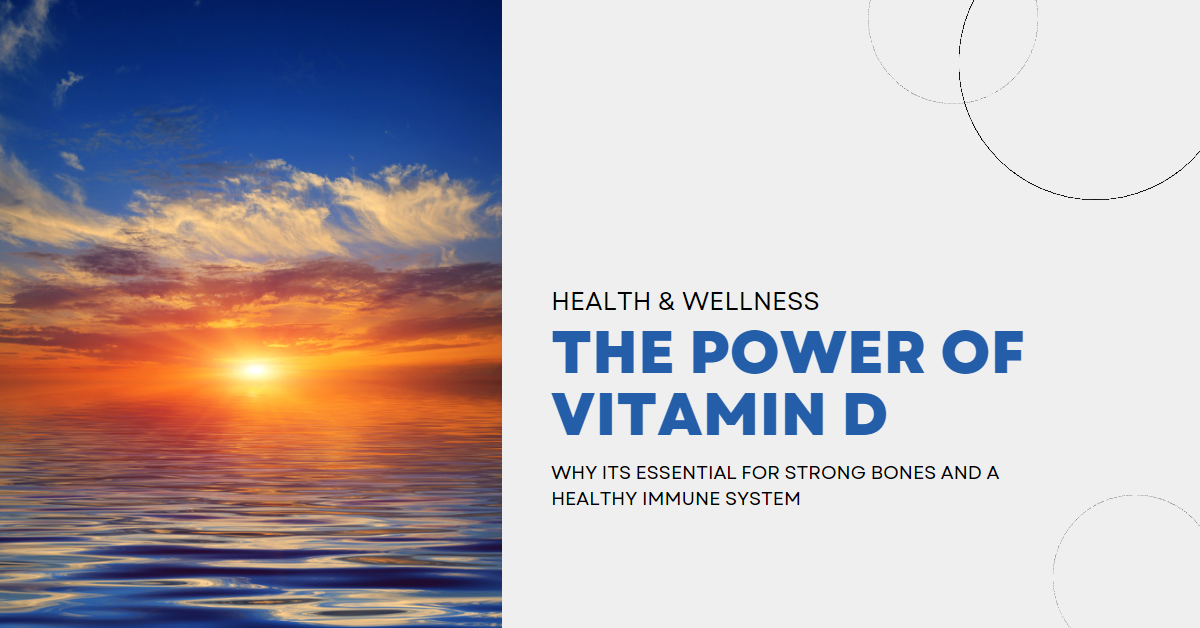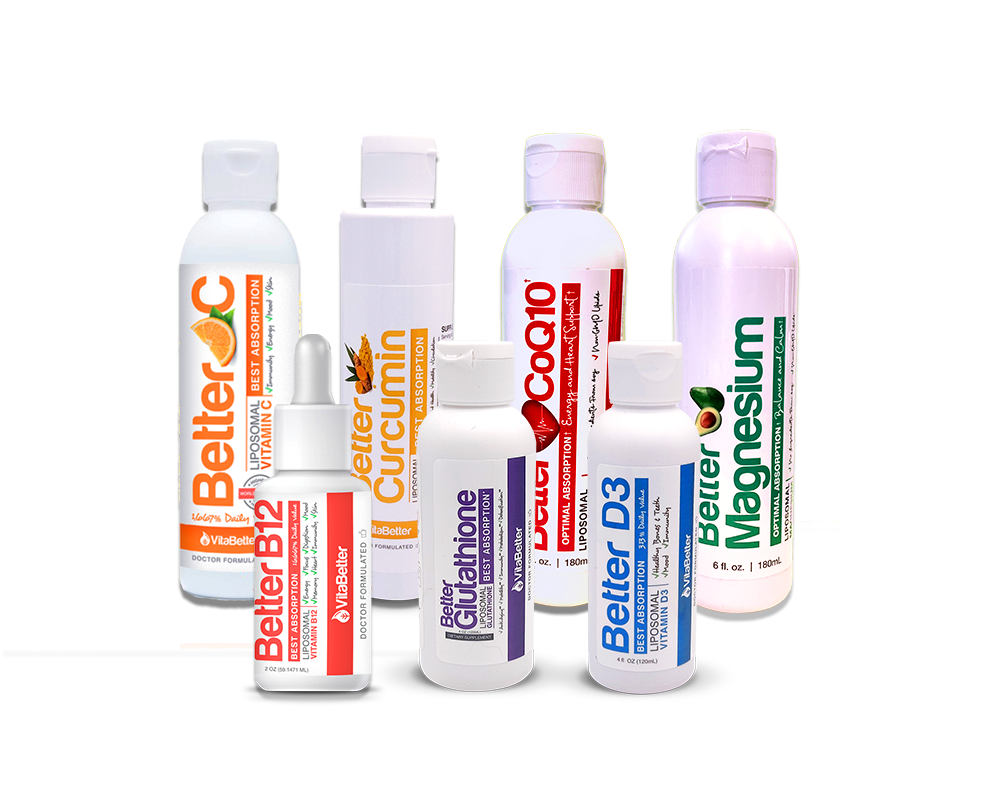This article highlights the importance of Vitamin D for maintaining good health. Vitamin D is essential for strong bones, a healthy immune system, and overall well-being. The article explains how Vitamin D works in the body, sources of Vitamin D, and its health benefits. The recommended daily intake of Vitamin D is 600-800 IU for most adults, but some people may need more. The article concludes that it is crucial to get enough Vitamin D to prevent deficiency and maintain good health.
Key Highlights
- Vitamin D is a fat-soluble vitamin that is essential for strong bones, healthy immune function, and overall well-being. It is naturally present in a few foods, added to others, and available as a dietary supplement.
- The best source of vitamin D is sunlight. When the skin is exposed to sunlight, the body produces vitamin D, and this is the most efficient way to obtain vitamin D.
- Vitamin D deficiency is a common problem, especially in areas with limited sun exposure. Symptoms of vitamin D deficiency include bone pain, muscle weakness, and an increased risk of fractures.
Vitamin D, also known as the sunshine vitamin, plays an important role in maintaining good health. It is a fat-soluble vitamin that is naturally present in a few foods, added to others, and available as a dietary supplement. Vitamin D is essential for strong bones, healthy immune function, and overall well-being. In this article, we will explore the benefits of vitamin D and why it is crucial for maintaining good health.
What is Vitamin D?
Vitamin D is a fat-soluble vitamin that is naturally present in a few foods and is also produced when the skin is exposed to sunlight. It is essential for the absorption of calcium and phosphorus, which are necessary for strong bones and teeth. Vitamin D also helps to regulate cell growth and maintain a healthy immune system.
How does Vitamin D work?
Vitamin D is a fat-soluble vitamin that is naturally present in a few foods and is also produced when the skin is exposed to sunlight. It is essential for the absorption of calcium and phosphorus, which are necessary for strong bones and teeth. Vitamin D also helps to regulate cell growth and maintain a healthy immune system.
How does Vitamin D work?
When sunlight hits the skin, it triggers the production of vitamin D in the body. Vitamin D then undergoes a series of chemical reactions in the liver and kidneys to become an active hormone called calcitriol. Calcitriol helps to increase the absorption of calcium and phosphorus from food in the small intestine, which helps to build strong bones and teeth.
Sources of Vitamin D
Vitamin D is naturally present in a few foods such as fatty fish, egg yolks, and liver. It is also added to some foods like milk and breakfast cereals. However, the best source of vitamin D is sunlight. When the skin is exposed to sunlight, the body produces vitamin D, and this is the most efficient way to obtain vitamin D.
Benefits of Vitamin D
Vitamin D has numerous health benefits, including:
a) Strong bones: Vitamin D helps the body absorb calcium, which is necessary for strong bones and teeth. Without enough vitamin D, bones can become thin, brittle, or misshapen.
b) Immune system: Vitamin D plays a crucial role in maintaining a healthy immune system.
c) Mood and cognitive function: Vitamin D may also play a role in regulating mood and cognitive function. Low levels of vitamin D have been linked to various mental conditions.
How much Vitamin D do you need?
The amount of vitamin D you need depends on your age, gender, and overall health. The recommended daily intake of vitamin D is 600-800 IU for most adults. However, some people may need more vitamin D, such as those who live in northern latitudes, have darker skin, or have limited sun exposure.
Vitamin D Deficiency
Vitamin D deficiency is a common problem, especially in areas with limited sun exposure. Symptoms of vitamin D deficiency include bone pain, muscle weakness, and an increased risk of fractures.
In conclusion, vitamin D plays a crucial role in maintaining good health. It is essential for strong bones, a healthy immune system, and overall well-being. The best way to obtain vitamin D is through sunlight, but it is also present in a few foods and available as a dietary supplement. It is important to get enough vitamin D to prevent deficiency and maintain good health.
References
Holick, M. F. (2011). Vitamin D: A D-Lightful Solution for Health. Journal of Investigative Medicine, 59(6), 872–880. https://doi.org/10.2310/JIM.0b013e318214ea2d
National Institutes of Health, Office of Dietary Supplements. (2022). Vitamin D. https://ods.od.nih.gov/factsheets/VitaminD-HealthProfessional/
Wimalawansa, S. J. (2018). Vitamin D in the New Millennium. Current Osteoporosis Reports, 16(2), 211–223. https://doi.org/10.1007/s11914-018-0427-1
Zittermann, A., Ernst, J. B., Prokop, S., Fuchs, U., Dreier, J., Kuhn, J., Knabbe, C., Birschmann, I., Berthold, H. K., & Pilz, S. (2020). Effect of Vitamin D Supplementation on Cardiovascular Disease Risk Factors and Exercise Performance in Healthy Participants: A Randomized Clinical Trial. Nutrients, 12(10), 3050. https://doi.org/10.3390/nu12103050
Gröber, U., Spitz, J., Reichrath, J., & Kisters, K. (2014). Vitamin D: Update 2013. From Rickets Prophylaxis to General Preventive Healthcare. Dermato-Endocrinology, 6(1), e1. https://doi.org/10.4161/derm.23356
World Health Organization. (2022). Micronutrient deficiencies: Vitamin D deficiency. https://www.who.int/nutrition/topics/vitamin_d_deficiency/en/
Bischoff-Ferrari, H. A., Willett, W. C., Wong, J. B., Giovannucci, E., Dietrich, T., & Dawson-Hughes, B. (2018). Fracture Prevention with Vitamin D Supplementation. JAMA, 319(15), 1592. https://doi.org/10.1001/jama.2018.3185
Bouillon, R., Marcocci, C., Carmeliet, G., & Bikle, D. (2018). White Paper: Vitamin D in 2020. European Journal of Endocrinology, 183(2), P1–P22. https://doi.org/10.1530/EJE-20-0185
National Osteoporosis Foundation. (2022). Calcium and Vitamin D: What You Need to Know. https://www.nof.org/patients/treatment/calciumvitamin-d/
Holick, M. F., Binkley, N. C., Bischoff-Ferrari, H. A., Gordon, C. M., Hanley, D. A., Heaney, R. P., Murad, M. H., & Weaver, C. M. (2011). Evaluation, Treatment, and Prevention of Vitamin D Deficiency: An Endocrine Society Clinical Practice Guideline. The Journal of Clinical Endocrinology & Metabolism, 96(7), 1911–1930. https://doi.org/10.1210/jc.2011-0385


